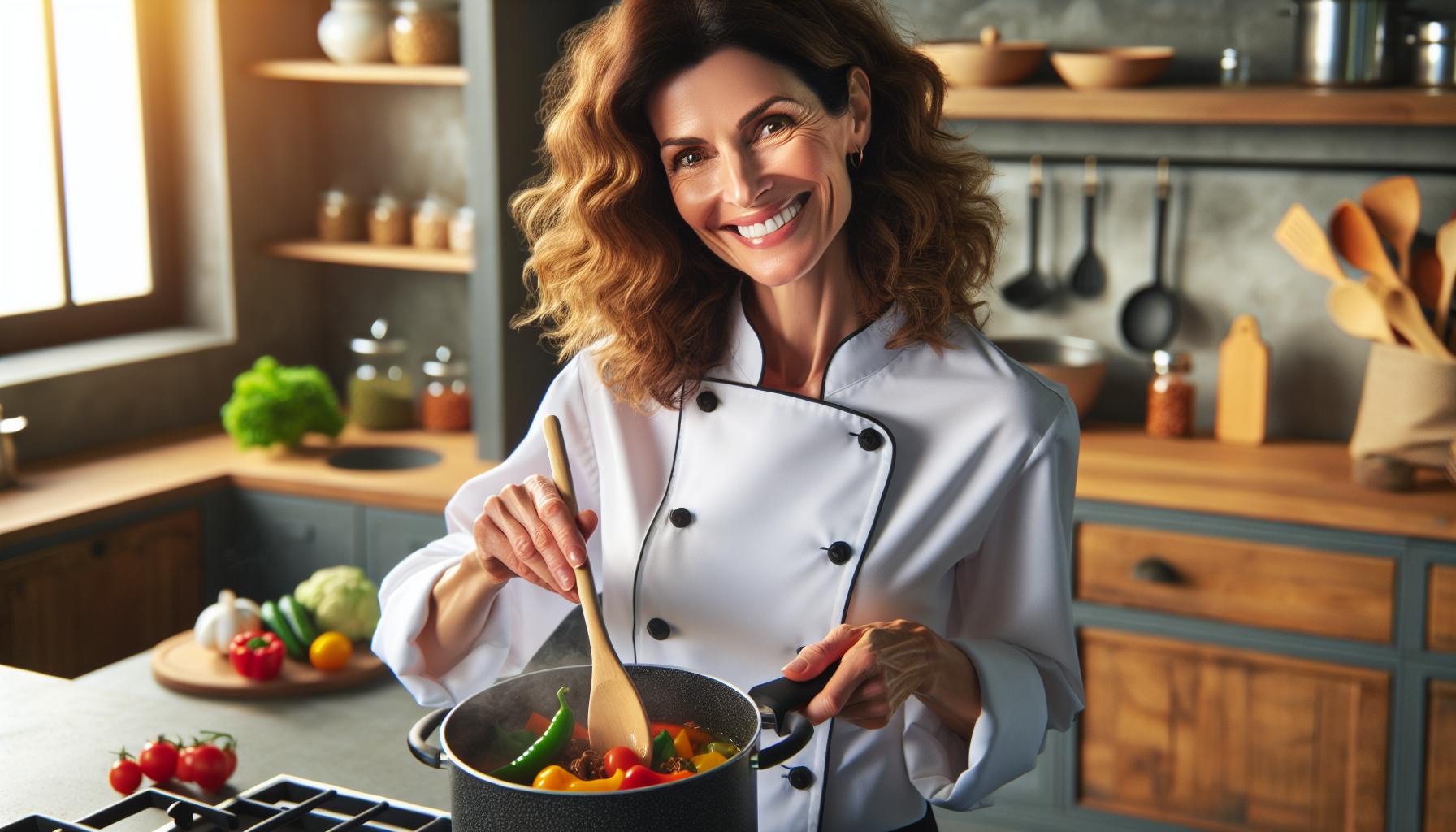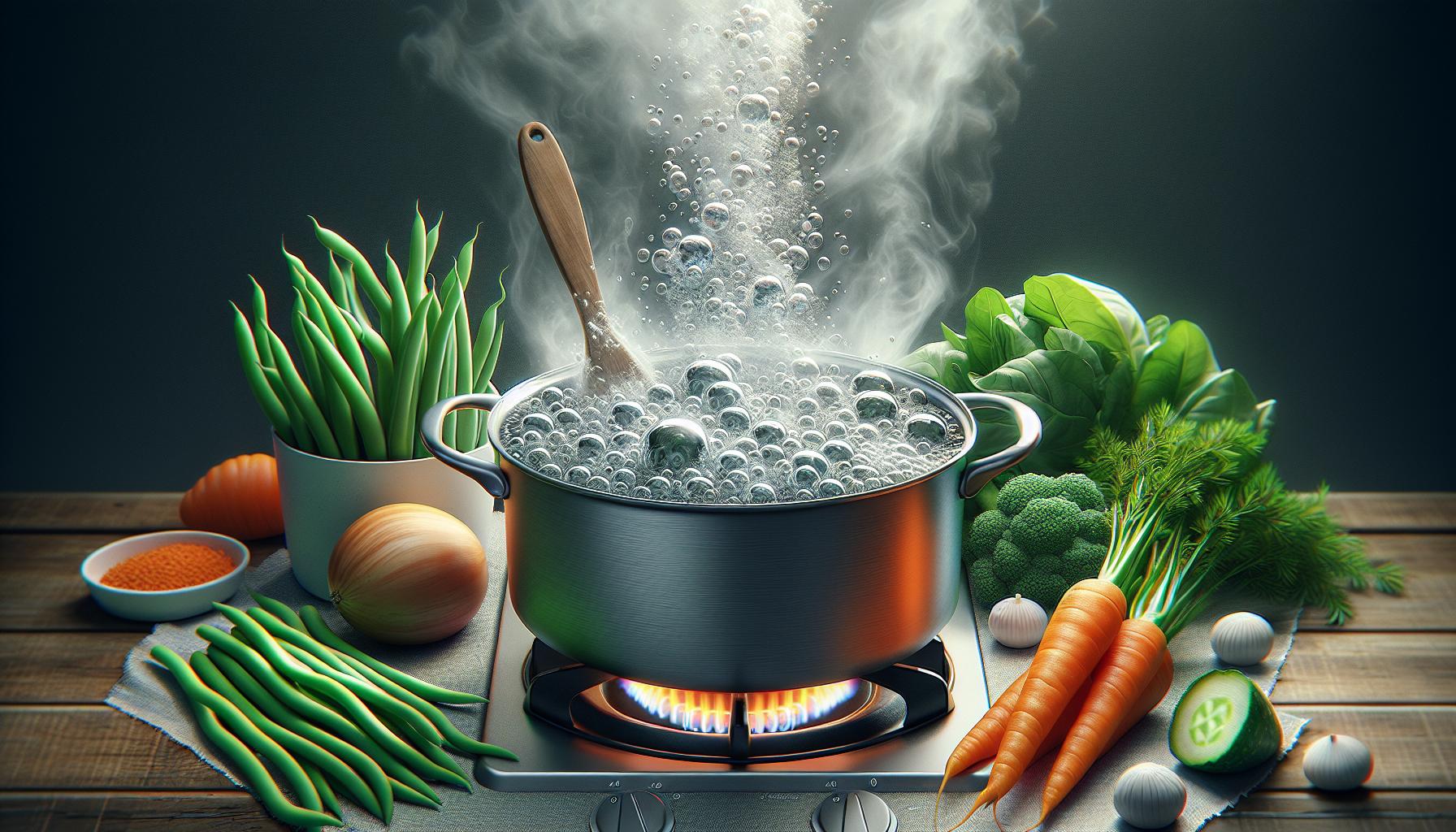Phone:
(701)814-6992
Physical address:
6296 Donnelly Plaza
Ratkeville, Bahamas.

Mastering moist cooking techniques can transform ordinary ingredients into mouth-watering masterpieces. Whether it’s a succulent braised short rib or a perfectly steamed dim sum, these methods rely on the magic of moisture to create tender, flavorful dishes that’ll make any home chef look like a pro.
From braising and steaming to poaching and stewing, moist cooking techniques harness the power of liquid and steam to break down tough proteins and infuse foods with incredible flavor. Unlike dry-heat methods that can sometimes leave food parched and disappointing, these gentle cooking approaches ensure every bite stays juicy and delectable. It’s like giving your ingredients a relaxing spa day – they emerge tender, relaxed and absolutely transformed.
Moist cooking techniques involve preparing food using water, stock, wine or steam as the primary heat conductor. These methods maintain consistent temperatures between 140°F and 212°F throughout the cooking process.
Common moist cooking techniques include:
Each technique creates distinct results:
| Method | Temperature | Best For |
|---|---|---|
| Poaching | 160-180°F | Eggs, fish, fruit |
| Simmering | 185-205°F | Vegetables, tough cuts |
| Steaming | 212°F | Vegetables, fish, dumplings |
| Braising | 140-160°F | Large meat cuts, root vegetables |
| Stewing | 160-180°F | Meat chunks, hardy vegetables |
The liquid component serves multiple functions:
Moist cooking excels at breaking down connective tissues in meat while preserving nutrients in vegetables. The consistent moisture environment prevents scorching or burning common in dry-heat methods.

Boiling and simmering form essential moist cooking methods that apply different water temperatures to achieve specific culinary results. These techniques require precise temperature control to create optimal textures and preserve nutrients in various ingredients.
A rolling boil occurs at 212°F (100°C) when water bubbles vigorously with continuous movement throughout the liquid. Large bubbles rise rapidly from the bottom of the pot creating turbulent water motion at the surface. A gentle simmer maintains temperatures between 185-200°F (85-93°C) with small bubbles rising slowly to the surface in a steady stream. The visual difference appears in bubble size frequency with occasional gentle movement at the surface during simmering compared to constant agitation in boiling.
| Method | Temperature | Bubble Activity | Water Movement |
|---|---|---|---|
| Rolling Boil | 212°F/100°C | Large rapid bubbles | Vigorous turbulent |
| Gentle Simmer | 185-200°F/85-93°C | Small occasional bubbles | Minimal gentle |
Foods ideal for boiling include:
Steaming preserves nutrients by cooking food with hot water vapor at 212°F (100°C). This gentle cooking method maintains food’s natural color texture while enhancing flavors without added fats.
Direct steaming places food directly over boiling water, allowing steam to make immediate contact with ingredients. The food rests in a perforated basket or steamer insert above the water level, creating rapid heat transfer. Indirect steaming utilizes a secondary container between the water source and food, reducing the steam intensity. This method works effectively for delicate items like fish fillets puddings custards. A comparison of cooking times shows direct steaming cooks vegetables in 5-10 minutes while indirect methods take 12-15 minutes for similar results.
| Steaming Method | Cooking Time | Best For |
|---|---|---|
| Direct | 5-10 min | Vegetables leafy greens dumplings |
| Indirect | 12-15 min | Fish fillets puddings custards |
Basic steaming requires three core components: a pot stockpot bamboo steamer holds the water a steamer basket insert holds the food a tight-fitting lid traps the steam. Bamboo steamers offer stackable levels for cooking multiple items simultaneously. Metal steamer baskets collapse for easy storage fit various pot sizes. Electric steamers provide precise temperature control built-in timers multiple compartments. Silicone steamer baskets offer flexibility durability dishwasher-safe convenience. A deep pot with at least 2-3 inches of water ensures consistent steam production throughout cooking.
Braising combines dry and moist heat cooking methods to transform tough cuts of meat into tender, flavorful dishes. This technique starts with searing the meat at high temperatures followed by slow cooking in liquid at low temperatures.
Optimal braising requires a heavy-bottomed pot with a tight-fitting lid. The process starts by searing meat at 450°F to create a golden-brown crust through the Maillard reaction. After searing, aromatics like onions, carrots celery get added to the pot. The cooking liquid, typically stock, wine or broth, covers 1/3 to 1/2 of the meat. Common braising ingredients include:
Maintaining consistent temperatures delivers optimal braising results. The liquid temperature stays at 185-200°F throughout cooking. Here’s a breakdown of key temperature points:
| Stage | Temperature | Duration |
|---|---|---|
| Initial sear | 450°F | 3-5 minutes per side |
| Braising liquid | 185-200°F | 2-4 hours |
| Final internal temp | 195°F | N/A |
The lid position affects temperature control. A partially open lid reduces liquid faster while a tight seal maintains moisture levels. Small bubbles breaking the surface indicate proper braising temperature.
Poaching involves gently cooking food in a liquid that maintains a consistent temperature below boiling point. This gentle cooking method preserves delicate foods’ texture while infusing them with the flavors of the poaching liquid.
Shallow poaching uses minimal liquid that partially covers the food, typically reaching halfway up its sides. The liquid consists of stock or court bouillon combined with aromatics like herbs, wine or citrus. Deep poaching submerges food completely in liquid, creating even heat distribution around the item. Fish fillets, eggs, chicken breasts benefit from shallow poaching, while whole fish, poultry pieces perfect for deep poaching utilize the full liquid immersion. Each method requires different amounts of liquid:
| Poaching Method | Liquid Coverage | Best For |
|---|---|---|
| Shallow | 1/2 inch to 2 inches | Delicate fish fillets, eggs |
| Deep | Full submersion | Whole fish, poultry pieces |
Poaching temperatures range between 160°F-180°F (71°C-82°C) to prevent tough protein textures. The liquid shows tiny bubbles at the bottom of the pan without breaking the surface. Temperature requirements vary by ingredient:
| Food Item | Temperature | Time |
|---|---|---|
| Eggs | 160°F (71°C) | 3-4 minutes |
| Fish | 170°F (77°C) | 8-10 minutes |
| Chicken | 180°F (82°C) | 15-20 minutes |
The liquid temperature determines the final texture – too hot creates rubbery proteins while too cool leads to uneven cooking. A thermometer ensures precise temperature control throughout the cooking process.
Moist cooking techniques preserve essential nutrients through gentle temperature control between 140°F and 212°F. Vitamins B12 C E remain intact during steaming compared to other cooking methods which often destroy these nutrients at high temperatures.
Here’s a breakdown of nutrient retention rates in moist cooking methods:
| Cooking Method | Nutrient Retention Rate |
|---|---|
| Steaming | 90-95% |
| Poaching | 85-90% |
| Braising | 80-85% |
| Boiling | 75-80% |
Lower cooking temperatures in moist heat methods reduce the formation of harmful compounds such as acrylamides AGEs (Advanced Glycation End Products). Steam cooking prevents the need for additional fats while maintaining food’s natural moisture content.
Key health advantages of moist cooking include:
Natural flavors emerge through moist cooking as ingredients release their essence into the surrounding liquid. Proteins become more bioavailable when cooked in moist environments at controlled temperatures. Fiber rich vegetables maintain their structure making them more effective for digestive health.
Gentle cooking temperatures protect omega-3 fatty acids in fish seafood while creating tender textures. Mineral retention improves with moist cooking techniques especially for iron calcium magnesium. Collagen proteins break down effectively in moist environments creating gelatin which supports joint gut health.
Overcrowding the cooking vessel prevents proper heat distribution, resulting in uneven cooking. Leave 2-3 inches of space between food items during steaming, braising, or poaching.
Using excessive liquid drowns delicate flavors instead of enhancing them. Follow these liquid-to-food ratios:
Temperature control errors lead to tough, overcooked results. Monitor these critical temperatures:
| Method | Correct Temp (°F) | Common Error |
|---|---|---|
| Poaching | 160-180 | Boiling instead of gentle simmer |
| Braising | 185-200 | Cooking too hot or cold |
| Steaming | 212 | Insufficient water level |
Lifting the lid frequently releases essential moisture and extends cooking time. Check food only at specified intervals in recipes.
Seasoning errors compromise the final dish. Add salt at the start of cooking for even distribution, herbs during the last 30 minutes to preserve flavors.
Starting with cold ingredients increases cooking time and affects temperature consistency. Bring items to room temperature 30 minutes before cooking.
Skipping the initial sear in braising eliminates crucial flavor development. Brown meat on all sides at 450°F before adding liquid.
Using reactive cookware (aluminum or copper) with acidic ingredients creates metallic tastes. Choose stainless steel or enameled cast iron pots.
Moist cooking techniques represent a cornerstone of culinary excellence that balances flavor preservation nutrition and cooking efficiency. These methods transform tough cuts into tender delights while maintaining the natural essence of ingredients through precise temperature control and moisture management.
Whether steaming poaching braising or stewing each technique offers unique advantages that elevate everyday cooking to restaurant-quality results. By mastering these fundamental methods home cooks and professionals alike can create healthier more flavorful dishes while preserving essential nutrients.
The versatility and reliability of moist cooking techniques make them indispensable tools in any kitchen ensuring consistent delicious results every time. With proper attention to temperature control and cooking times these methods will continue to serve as the foundation for countless memorable meals.